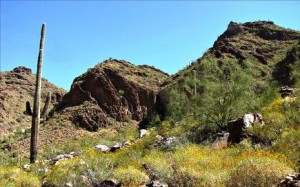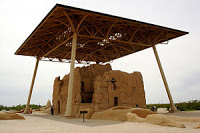San Tan Mountain Regional Park
‘Help us protect the land, history and wildlife’ is the motto for the more than 10,000-acre southeast Valley park of the lower Sonoran Desert. The park ranges in elevation from about 1,400 feet to over 2,500 feet. Goldmine Mountain is located in the northern area, with a spectacular San Tan Mountain escarpment in the southern portion of the park. Near the town of Queen Creek, the San Tan Mountain area is an ideal location to enjoy a part of the Sonoran Desert and truly appreciate the desert habitat and its wildlife, where vegetation changes from creosote flats to dense saguaro forest. Various types of wildlife may be observed, including reptiles, birds, and mammals. Amenities are slated for future development.
Don’t forget to stop by the Visitor’s Center to pick up educational tidbits, purchase souvenir items, visit with park staff, and see the wildlife exhibits or tortoise habitat. Restroom facilities are available and additional amenities are slated for future development.
San Tan Mountain Regional Park
6533 W. Phillips Road
Queen Creek, AZ 85142
480-655-5554
E-mail: santanpark@mail.maricopa.gov
Park Hours
Sunday-Thursday: 6 a.m.-8 p.m.
Friday-Saturday: 6 a.m.-10 p.m.
365 days a year!

